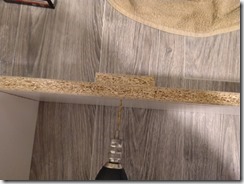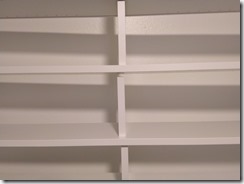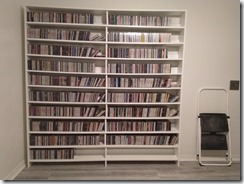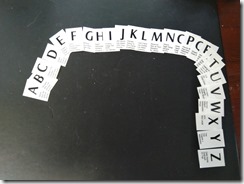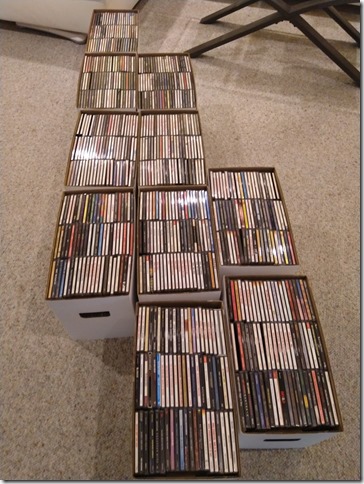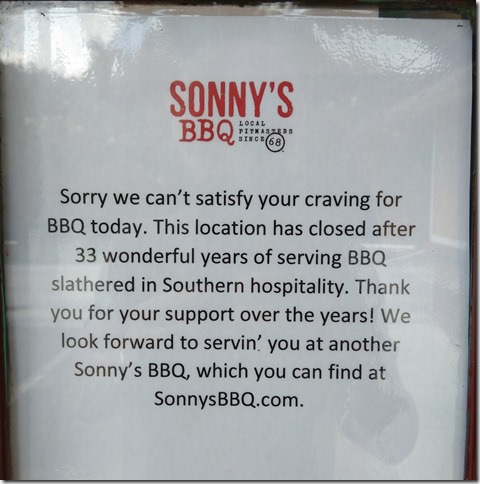I’ve had a plan for a long time to display my CD collection in a large shelving rack. When I last had my CDs organized, they were in rotating towers. First one tower, then a larger one, then, because of growth, both towers at the same time. I currently have about 1500 CDs and I should be planning for many more.
Early in my collecting days, I used the Ikea Benno shelves. I still have the three that I used (capacity 540, for reference). I still think they are the best for display and storage, so I gave consideration to getting more. Now, the Benno is called Gnedby, but most Ikea fans know both names.
Because I would be having so many towers to hold my large collection, I studied the hack to eliminate one of the side panels to reclaim some horizontal space. The result of the hack was pretty good, but the more I considered it, I was still turned off by having a grid of squares repeating over and over. The Benno was designed to be a vertical storage unit, which is how I laid it out when I used it. A-Z from top to bottom in the first tower, then top to bottom in the second tower and on and on. That’s not how I wanted my new shelves to be. I wanted a horizontal orientation.
My first idea was to stack the Bennos horizontally, which has been done already in the Ikea Hacks archive. That’s ok, but you still have the issue of doubled side panels. So I considered a means of stacking the Bennos and only using one side panel between each tier. I designed it to use short legs that would keep it up off the ground. My sketch was something like:

The problem with this is that I would have to buy 10 towers and I would end up with a bunch of leftover side panels. So I reconsidered the design. What if I used side panels for the sides and side panels as the shelves. That eliminates the two vertical end pieces, which can then be repurposed as center vertical pieces. That works out to 7 towers, a savings of $150.
My original design was for 10 shelves – 10 Bennos stacked on top of each other. However, if I’m using the side panels as designed, a Benno has 12 shelves per tower. That’s a CD capacity increase from 1,800 to 2,160. That’s almost an extra year of growth at my current pace. However, that now requires 8 towers, so that’s an extra $50. With shipping and taxes, the whole purchase was $468.
The first step after unpacking all the Bennos is converting side panels to shelves. This is accomplished by sawing off the base of the side panel where the floor trim cutout is. This needs to be done on all but two side panels. When we’re done, one of the cut off bases will be used in the center for support.
The next thing I did was lay out the two side panels and position the bottom shelf. I drilled some holes from the inside out for the bottom shelf, then screwed the shelf to the side panels. Then I drilled holes and attached the center support to the bottom shelf.
When I attached the center support, I planned to have one screw up from the bottom and another down from the top of each shelf. So I attached the shelf’s bottom screw first, then once the shelves are attached to the side panels, the screw down from the top will be attached. This is a cross section of five shelves.
I brought in a group of shelves and center supports and attached the center supports to each (one screw from the bottom). With enough shelves to fill up half the unit, I marked which holes I would need to drill out to fasten each shelf to the side panels.
The next step is drilling holes through the side panels for each shelf. These don’t have to be large holes, just large enough so the wood won’t crack when putting screws through.
For the shelf that will be on the bottom, take one of the cut off bases from the shelves and position it where the center support will be. Screw the base to the bottom shelf for support between the bottom shelf and the floor.
The fastening of the center supports is a little convoluted because we’ve eliminated the two side panels in favor of one. So where normally, each shelf panel would screw into the center support, we have to connect each vertical support to the upper and lower shelf. Screw the front of each shelf up into the center support and the back of each shelf down into the lower center support. You can use the included Ikea screws for this. Finally, attach the side panels to the twelve shelves. The holes have already been drilled, so it’s just a matter of lining up the shelves with the holes. You should have enough Ikea screws to get through this as well.
Stand the shelf up and attach the backing. Because some shelves with be left hand panels and some will be right hand, you can attach the backing in a louver fashion either upper or lower facing.
Then the fun part, filling the shelving. The whole purpose of wanting to have horizontal shelves is so the collection goes from A-Z from left to right, top to bottom. One of the appealing design considerations for organizing this way is something I saw in a picture of someone else’s collection. That element was having small letters indicating the alphabetical progression through the collection. My research has shown that really nice crafted letters to divide the collection are not cheap. Cheap if you want your initials. Not cheap if you want the whole alphabet. While I was disappointed by that, I pondered how else I could have alphabetical dividers in my collection. One idea that came to me was alphabet blocks. But I think the bright multi-colors would be too whimsical. I found a modern set of blocks, but beyond their size being too small, 1.5”, they were also $85.
My solution was to repurpose all the shelves that would not get used with my redesign. I could glue two together for visual weight, then stick a large letter sticker on the front. Alphabet stickers can be bought in any craft shop for very little money. Less than a single fancy letter figure.







